The LED Show 2013 Lights up Vegas
投稿人:电子产品
2013-11-19
The LED Show 2013 held in Las Vegas had its largest-ever turnout with more than 2,600 attendees and an exhibit area featuring over 100 booths. The conference program included 35 industry experts and was kicked-off by a panel session tackling two key questions on the minds of show-goers: 1) whether LEDs could continue to chalk-up gains in terms of lumen output and efficacy at the same rate as they have in recent years; and 2) how different LED technologies will be used to meet solid-state lighting (SSL) system quality and cost goals. Panelists included Chad Stalker, regional marketing manager for the Americas at Philips Lumileds, Erik Swenson, manager of LED sales at Nichia, and Paul Scheidt, product marketing manager at Cree.
Stalker said he expects future efficacy advances will come more at the system level than at the component level. He predicted that while LEDs will continue to improve, it will be at a slower rate. He pointed to what he sees as a critical need for better red LEDs mixed with phosphor-converted white LEDs for good color rendering at warm CCTs. Lumileds, he noted, is working on different powers and radiation patterns for different markets. He cited A19s, street lighting, and cove lighting as examples of areas in need of its own specialized LEDs.
Nichia’s Swenson focused on mid-power LEDs, claiming that the components are improving efficacy more rapidly than high-power devices and noting that they offer quality and aesthetics that can better meet many application requirements. He claimed Nichia’s757 LED offers economies that high-power LEDs cannot equal.
Paul Scheidt of Cree discussed system-level cost issues and concluded that LEDs are less of a factor to system cost compared to other things such as drivers and optics. He presented several ways of addressing system cost with different types of LEDs and different system architectures. Looking at the AC-LED approach, Scheidt said AC-driven designs require more LEDs because not all of the LEDs are driven at any point in time. He also characterized AC systems as having unresolved flicker problems and EMI issues that require extra circuitry. Taking on the mid- /high-power debate, Scheidt said that in as little as two years mid-power LEDs will shift in color with undesirable results. He said the problem is exacerbated by driving LEDs harder and by limiting the number of LEDs in a system. Scheidt’s conclusion was that in many applications such as retrofit lamps, high-voltage, high-power LEDs offer the best system-level approach and the highest system efficacy. Both Cree’s Scheidt and Philips Lumiled’s Stalker believe that LED costs will continue to drop 20 to 30 percent per year for the next several years.
The LED Show also had sessions on “The latest news on LED chip technology,” “Interior LED lighting- designing the space with LEDs,” “How to light your exterior space intelligently”, “The psychology of lighting” and “LED lighting systems,” as well as talks about solid-state lighting standards.
On exhibit
The LED Show attracts LED manufacturers displaying their latest technology and products for industrial and residential lighting, as well as LED power supplies and thermal control products. However, there were also several test companies in attendance, some well-known and others recently created or acquired – because this is a booming industry that needs short turn-around times for products. Following are some new and notable companies.
Autec Power Systems (APS): The company makes DC-input LED drivers, ranging from 10 to 300 W. The company offers constant-current LED drivers with/without dimming and with multiple outputs, as well as constant-voltage drivers. Many of the models provide a Class 2 output, have plastic or metal cases, and have IP65, IP67 ingress protection ratings. The LEDHC (Figure 1) handles high input voltages from 249 to 528 VAC with up to 91 percent efficiency and active power-factor correction of 0.95 at 277 VAC. It is a waterproof design, offers optional dimming control, and has overvoltage, short-circuit, and overtemperature protection.
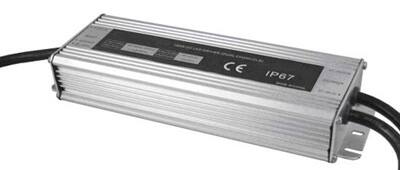
Cree introduced its new 4,000 lumen LMH020-4000-30G9-00000TW, part of the company’s LMH2 series that is claimed to deliver an industry-leading light-source efficacy of up to 97 lm/W (steady state) for 800 to 3,000 lm, 108 lm/W (steady state) for 4,000 lm, all available with WhiteLight dimming. According to Cree, it produces the same or better quality light as 70 W Ceramic Metal Halide (CMH) lamps while consuming half the power and lasting three times longer. The LMH2 module family is available in a range of lumens (850, 1,250, 2,000, 3,000, and 4,000), color temperatures (2,700 K, 3,000 K, 3,500 K, and 4,000 K) and driver options, including Digital Addressable Lighting Interface (DALI) and DALI touch-dimming driver options. It is designed for 50,000 hours of operation and is dimmable to five percent. Cree notes that luminaire makers seeking Energy Star qualification will have access to specification and performance data, including LM-80 reports, which can speed regulatory approval.
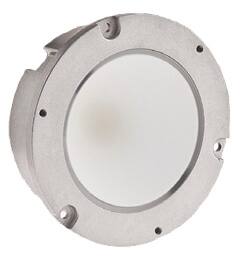
ERG Lighting makes LED drivers for solid-state lighting. The ArchiLume series LED drivers are said to be the slimmest 100 W drivers on the market, measuring 17.36 x 1.33 x 1.25 in., and suitable in applications such as architectural (office, hospitality, commercial, institutional), high-end retail (in-store displays, showrooms), home (kitchen, bathroom), and high-bay lighting.
EuControls makes LED control systems, DMX drivers/decoders, and LED dimmers. Its XT3-30600-IR RGB controller is a three-channel, 3 A maximum per-channel device that has touch buttons and a color control ring to select and control colors. The receiver has 31 built-in color modes and uses a 216 W, 24 VDC power supply.
Illumra makes an interesting wireless control (Figure 3) for LED lighting that is fully dimmable with a range of 150 ft. Self-powered wireless light switches are powered by EnOcean technology that converts the press of the switch into a small amount of electricity. This electricity is used to transmit a wireless signal that communicates with a wide variety of Illumra receivers. Battery-free wireless light switches are primarily used to control lights in homes or businesses, but they can be used to control virtually any on/off device. Each self-powered wireless light switch can be placed anywhere within range of a receiver. Traditionally, the wireless light switch is surface-mounted on a wall with screws or industrial tape, but it can also be used in a standard switch box or as a wireless handheld remote.
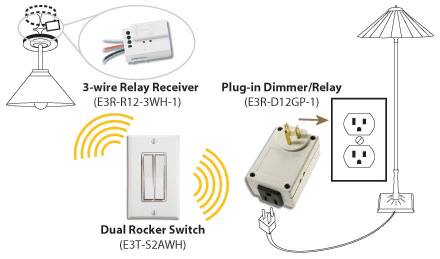
There are many more lighting test companies than just a few years ago because there are more manufacturers with products that want to get to market as quickly as possible.
Intertek was one of the test companies attending. Intertek has more than 1,000 labs around the globe, and like others at the show, can help companies get their lighting products into any country by testing them to meet the standards of that country.
LumenOptix offers specification-grade lighting including luminaires and medium/thin/wide beam reflectors. The LRD-10 beam reflectors (Figure 4) convert existing 10 in. commercial and industrial downlights to LED versions. The reflector is made for this LED light source with low iridescent specular, semi-specular, and diffused finishes to provide a non-glare, evenly distributed and efficient optical system. The L70-rated life is 50,000 hours, the color-rendering index is >82, and the correlated color temperature is 2,700 K, 3,000 K, 3,500 K, or 4,000 K.
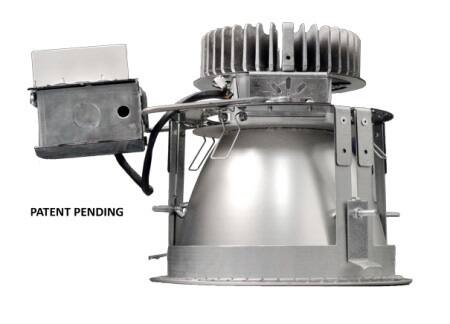
MOSO Power Supply Technology is a designer and manufacturer of switch-mode power supplies located in Shenzhen, China. The company offers LED driver solutions, with constant-voltage and constant-current technologies with active power-factor performance over a range from 30 to 300 W suitable for LED street, tunnel, walkway, and parking lot lighting. They feature a constant-current, multi-channel Class 2 driver with outputs from 50 to 150 W with up to eight channels. They have a 90 to 264 VAC input range, a power factor of 0.95, and are encapsulated, meeting IP67 waterproof requirements.
Seoul Semiconductor highlighted the benefits of its Acrich2 AC LED modules family of AC LED modules (Figure 5), which do not require the drivers, electrolytic capacitors, or ballasts associated with traditional light sources. By way of review, an AC LED is an LED that operates directly off AC line voltage. Acrich2 solutions from Seoul Semiconductor combine AC-integrated power IC technology with patented high-voltage, multi-junction LEDs that are said to overcome the shortcomings of traditional AC-powered LED solutions including flicker, high total harmonic distortion (and as a result poor power factor), and low efficacy. Benefits of the Acrich2 family are said to include: flexible design, freeing up space by eliminating components, and lowering design costs. According to the company, the modules are easy to use in existing incandescent or fluorescent fixtures.
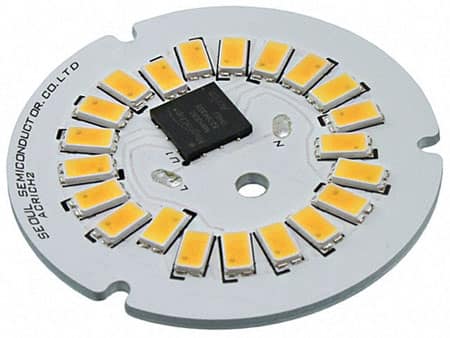
免责声明:各个作者和/或论坛参与者在本网站发表的观点、看法和意见不代表 DigiKey 的观点、看法和意见,也不代表 DigiKey 官方政策。





